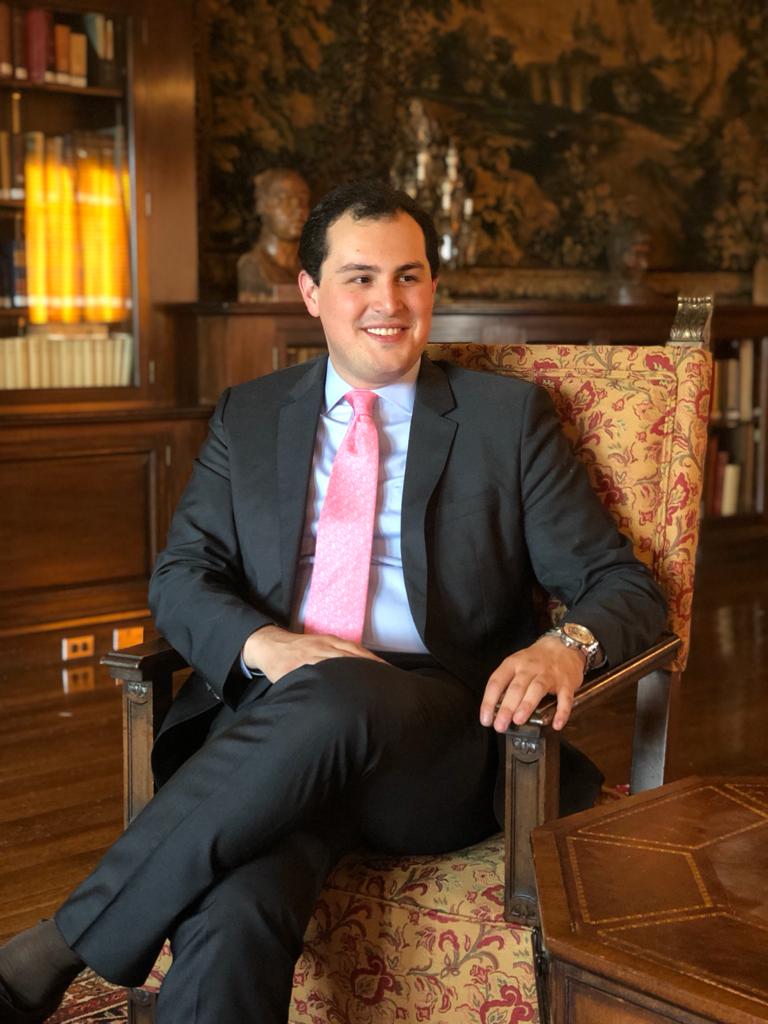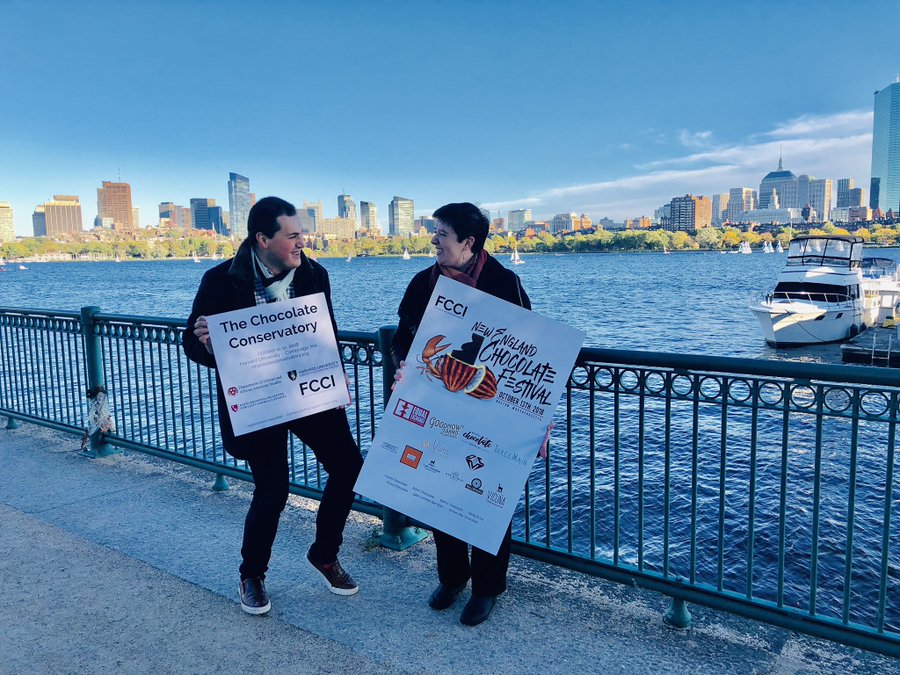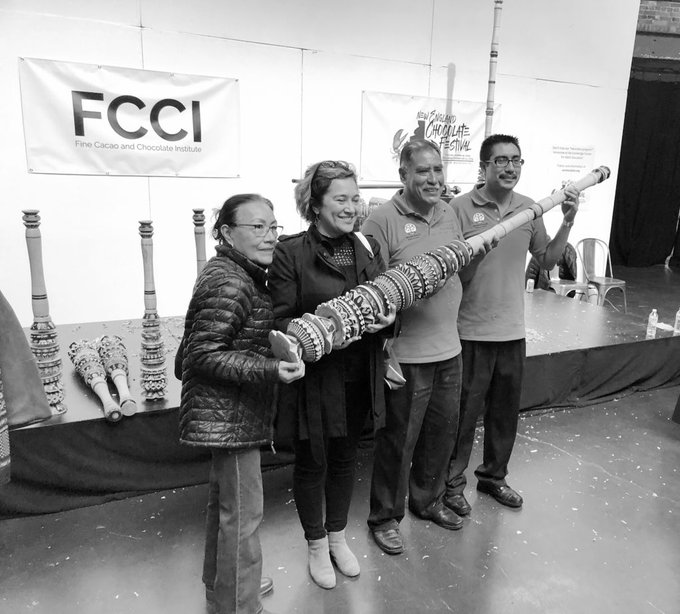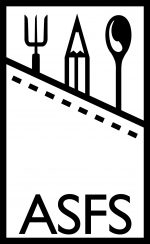
José López Ganem is a graduate student in the Boston University Gastronomy program. He served as the first Resident Fellow for the Fine Cacao and Chocolate Institute (FCCI). José’s work centers around questions of the definitions, boundaries, and the business of Mexican chocolate. In this interview with Alanna K. Higgins, José discusses grad school, his work at the FCCI, Mexican chocolate, his research trajectory, and favorite foods.
How did you find out about ASFS?
I had the pleasure of being guided into the field of food studies by the outstanding faculty at the Culinary Institute of America: Beth Forrest, Deirdre Murphy, and Willa Zhen. Through their mentorship and friendship, I learned about the professional community at ASFS. Later on, when I joined Boston University, I made the it top-of-list to join ASFS as a member.
You’ve recently joined the Gastronomy Program at Boston University as a graduate student. What are you hoping to get out of the program, particularly in relation to food studies?
I’m continuing to explore a hybrid career path – a common phenomenon in our field, where we have an industry footing in food as well as an academic interest. I’m honored to be part of the Gastronomy Program at Boston University, which has a community where this mindset prevails. Additionally, the possibility to interact with faculty in the Business and International Politics departments has been of great benefit to my research.

You served a Resident Fellow at the Fine Cocao and Chocolate Institute. Can you tell us what work the Institute does, and what being a Resident Fellow entailed?
The Fine Cacao and Chocolate Institute is a 501(c)(3) non-profit organization devoted to research, education, and community development in the specialty cacao and chocolate industry. Founded by Harvard’s Carla D. Martin, along with former chocolate maker Colin Gasko and other peers in the industry, the Institute specializes in the social aspects of this commodity supply chain – labor, critical perspectives on trade and business, public policy, cultural affairs, to name a few.
I had the opportunity to be the first Latin American Cultural Exchange Fellow from 2019-20. Despite being interrupted by the COVID-19 pandemic, the LACE Fellow is an upcoming researcher in the field of cacao/chocolate who hails from a Latin American country and is interested in using FCCI resources to develop original research and education outreach in relation to their particular region. I was able to use this time to develop research in regards to the umbrella brand of Mexican cacao and chocolate, interrogating its historical and financial development, as well as compiling evidence-based statistics about the sector’s future human and financial viability.
FCCI has now launched the ACE Fellowship – Asian or African Cultural Exchange Fellowship, wanting to highlight the talent of those cacao-producing regions. The current LACE fellow is Sofia Colmenares, from the University of British Columbia, representing Colombia.
A shoutout: endless gratitude to the FCCI board and team, especially Carla Martin and Kathryn Sampeck for their ongoing support.
What kind of programming does FCCI organize that might interest ASFS members as scholars and consumers?
Part of FCCI’s professional and consumer programming, events such as the Chocolate Conservatory and the New England Chocolate Festival (NECF) serve to work toward achieving the organization’s mission. The former is an academic and industry gathering where professionals intertwine perspectives on the future of the cocoa and chocolate sector. The latter – a personal favorite – is a consumer-driven event that serves the New England community with some of the region’s best cacao/chocolate artisans, a guest country, and a guest region. In 2019, we had the pleasure of having the Alonso Torres family as guests of the NECF. These renowned Mexican artisans demoed the crafting of molinillos – wooden tools to froth cocoa-based beverages – using mechanical wood lathes. Hopefully, when the COVID-19 pandemic finishes globally FCCI will continue to host these events.
How did you get interested in researching the history of cacao and chocolate, particularly in Mexico?
The main ingredient here is my nationality – I was born and raised in Mexico. I feel I have competency focusing on something that is relatively familiar to my personal experience. Secondly, there is my professional training in New York, both in classrooms at the Culinary Institute of America and the Institute of Culinary Education, and in prominent kitchens the Big Apple. These experiences were filled with commodity-packed spaces: sugar, coffee, chocolate (cacao), wheat, among others. In conjunction with the above, as we join the food economy as food thinkers and consumers, I was interested to contributing to the body of work being develop to understand – and hopefully influence – the future consumers of commodity-based goods. Both professionals and enthusiasts persist in pushing an imaginary label when it comes to chocolate: the Mexican historical omen over cacao candy chocolate. Without trying to rewrite the good literature in regards to history, I hope my interests translates into deeper understanding of how Mexico is so relevant to cacao/chocolate branding, culture commodification, and policy making.

In fact, what is Mexican chocolate?
This is an excellent question, as a matter of fact my research question in a nutshell. I’ve written some articles to guide the conversation. I invite anyone interested to follow my research (links here and here). A fair warning is that Mexican chocolate as a definition will live in the same limbo as terroir, not because of any pretend mysticism, but because putting boundaries around such terms might reduce the benefits to business. Setting limitations to something in food immediately translates into costly process or label modifications. Otherwise, an unchecked use of this is both profitable and easy.
You have a lot of experience in radio presenting. Have you found this to be helpful in any way in presenting research findings?
It’s indeed my favorite medium of communication – first because its widely available to listeners, but second because I get to hide my ungenerous looks! Following pedagogical research, it’s interesting to note that most people learn by hearing or engaging in conversations with peers or friends. I do believe the art of conversation and the profession of teaching bind well over the radio.
I could ask you about your favorite chocolate, but that may be cliché… So, what’s your favorite savory food?
That’s very kind and generous of you – I would like to say that my favorite chocolate is milk chocolate. As a millennial, my sweet tooth developed due to exposure to corn syrup and the sort. I get lots of grumpy looks from the fine chocolate folks.
Savory-wise, I have a permanent appetite for US diner food, which might mean I’m always in the mood for something with a sweet touch. I also tend to gravitate to Mexico City long-time breakfast institutions like El Cardenal or Club de Banqueros, whose red sauce chilaquiles and cream-filled conchas (a Mexican pastry) make the best part of a hometown visit. I grew up in a Spanish-Lebanese household. From the former I take the pantomate with any Iberian cold meats, the latter kibbe with labneh. My apologies to all the nutritionists or health-conscious peers that might read this, I eat my favorites with measure.
